Explore The Majestic Bara Imambara Park Of Lucknow In 2026
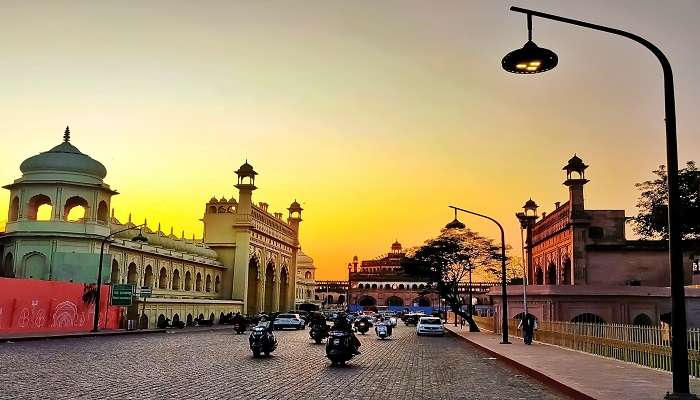
Bara Imambara, also known as Asafi Imambara, is an Imambara complex in Lucknow, India, built by Asaf-ud-Daula, Nawab of Awadh, in 1784. Bara means big. Red sandstone and marble were used to make Bara Imambara and Rumi Darwaza in Lucknow. The Imambara has a unique style of construction. Moreover, no wood or metal has been used to construct this mosque. One can also see the grave of Nawab Asaf-Ud-Dowlah and his crown, which is kept in the central hall, said to be the largest vaulted chamber in the world. Bara Imambara is considered a marvel of engineering and a fine specimen of Mughal architecture. In this blog article, we will explain everything that you need to know as a tourist or a traveller about this fantastic piece of architecture called the Baba Imambara in Lucknow, Uttar Pradesh.
About Bara Imambara
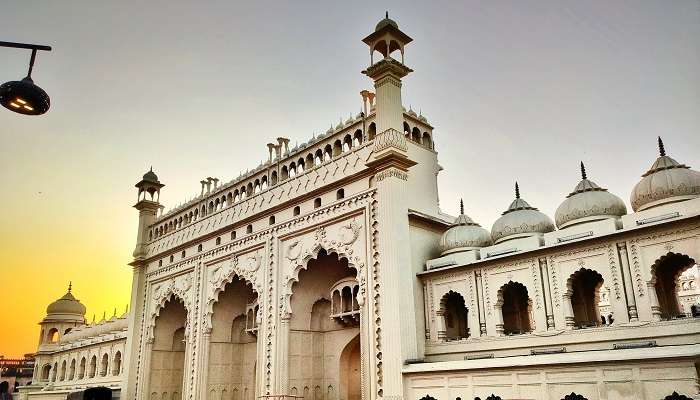
Bara Imambara, also known as Asafi Imambara, is an Imambara complex in Lucknow, India, built by Asaf-ud-Daula, Nawab of Awadh, in 1784. Bara means big. This Imambara is the second largest after the Nizamat Imambara. The Bara Imambara of Lucknow is one of the most famous monuments in the city. The Imambara is primarily known for its incredible maze, Bhul Bhulaiya, locally located on the monument’s upper floor. It is said that there are 1024 ways to get inside the maze, but only 2 to come out. A labyrinth of about a thousand passageways, the Bhool Bhulaiya at Bada Imambara in Lucknow has intrigued travellers and architects for the last two hundred years. The fourth Nawab, Asaf-Ud-Dowhala, commissioned the building during the drought year of 1784 AD to help the poor make a living. It reflects the Nawabi era’s opulence and their contribution to arts, culture, and architecture despite the political turmoils of the period. It was completed in 1784.
Must Read: Picnic Spots In Lucknow
Things To Do In Bara Imambara
There are certainly a plethora of things to do in Bara Imambara Lucknow; find a handpicked list of things exclusively for you below:
1. Explore The Main Hall
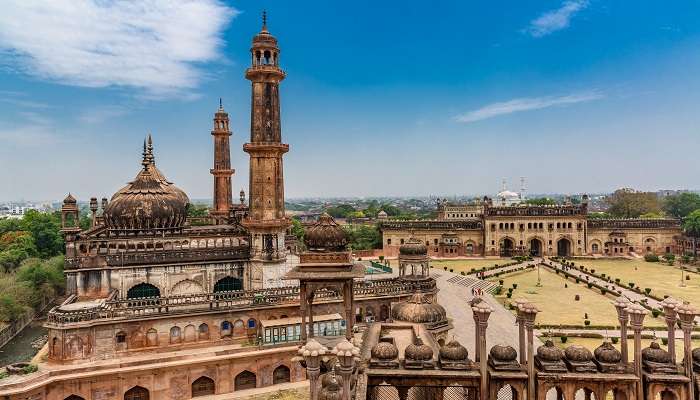
The main hall of Bara Imambara is a striking example of architectural ingenuity and grandeur. The main Imambara consists of a large vaulted central chamber containing the tomb of Asaf-ud-Daula. At 50 by 16 meters and over 15 meters tall, it has no beams supporting the ceiling and is one of the largest such arched constructions in the world. The massive central hall of the Imambara (a Shia Muslim meeting hall) is considered to be the largest arched hall in the world built without any external support from wooden, iron, or stone beams.
2. Visit the Bhulbhulaiya
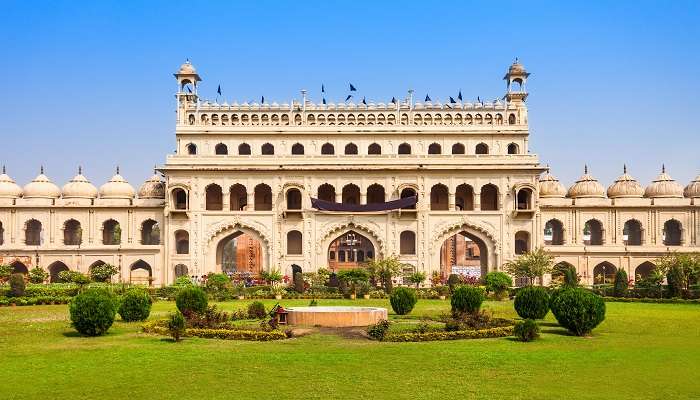
Visiting the Bhulbhulaiya, or the labyrinth, at Bara Imambara is an adventure that adds an element of mystery and excitement to your visit. It is a popular attraction among the locals and tourists and is possibly the only existing maze in India. It came about unintentionally to support the weight of the building, which is constructed on marshy land. Bhool Bhulaiya is a section of Lucknow’s Bara Imambara. More than 1,000 corridors and around 489 similar entrances make up the “Bhool Bhulaiya.” Nawab Asaf-ud-Daula decided to build the central hall without any supporting columns. He desired to erect a sizable mosque for communal prayer. This maze, located above the central hall, is composed of a network of narrow, winding corridors and interconnected passageways spread across three floors. The stunning labyrinth is located on the upper floor of the Imambara.
Suggested Read: Street Food In Lucknow
3. Explore The Asfi Mosque
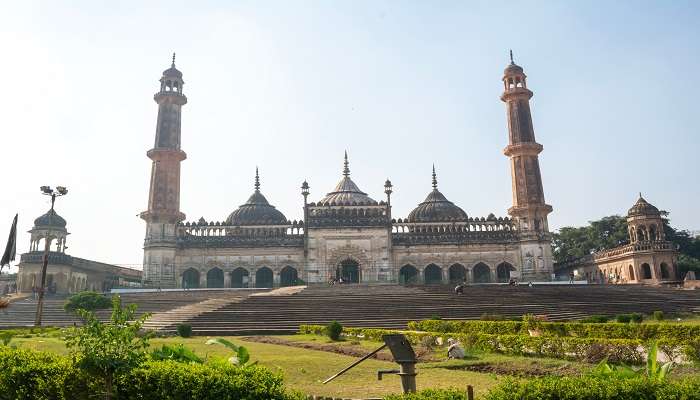
The Asfi mosque is located inside the Bara Imambara complex in Lucknow, India, built by Asaf-ud-Daula, Nawab of Awadh, in 1784. It is also called the Asafi Imambara. Construction of Bara Imambara was started in 1784, a year of a devastating famine, and one of Asaf-ud-Daula’s objectives in embarking on this grandiose project was to provide employment for people in the region for almost a decade while the famine lasted. The complex also includes a Labyrinth, and a bowl, a step well with running water. Exploring the Asfi Mosque within the Bara Imambara complex is a serene and culturally enriching experience. Built by Nawab Asaf-ud-Daula, this mosque exemplifies the exquisite Mughal architecture that characterizes much of Lucknow’s historic structures. The architecture of the complex reflects the maturation of ornamented Mughal design.
4. See the Shahi Baoli (Stepwell)
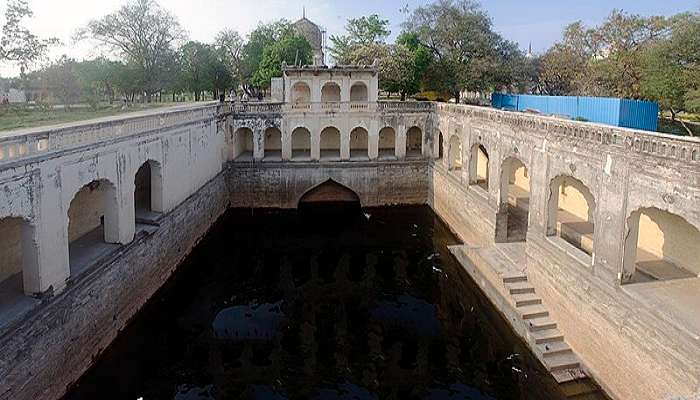
Shahi Baoli is a building raised around a large well, initially dug as the water reservoir for the Imambara construction works. The well happened to be a perennial source of water due to its connection to underground river streams. The emperor desired to build unique premises to host his distinguished guests and had chosen this particular spot to place it. One of the most interesting aspects of the Shahi Baoli is its ingenious water management system. The stepwell is connected to the nearby Gomti River, ensuring a steady supply of water. Shahi Baoli was also used as a Royal Guest House on many occasions when Warren Hastings, the Governor General of East India Company, stayed there.
Suggested Read: Things to do in Lucknow
Suggested Read: Things To do In Lucknow
5. Visit The Nearby Chota Imambara

Chota Imambara, also known as Imambara Hussainabad Mubarak, is a monument in Lucknow, Uttar Pradesh, India. It took 54 years to build. Visiting the Chota Imambara, also known as the Imambara of Hussainabad, enriches your exploration of Bara Imambara. Located just a short distance away in Lucknow, the Chota Imambara is another architectural gem Nawab Muhammad Ali Shah commissioned in 1838. The Chhota Imambara was initially a congregation hall for Shia Muslims built by Muhammad Ali Shah, the third Nawab of Awadh, in 1838. The Imambara was to serve as his own mausoleum and that of his mother, who is buried beside him in this prestigious monument.
6. Experience Cultural Events
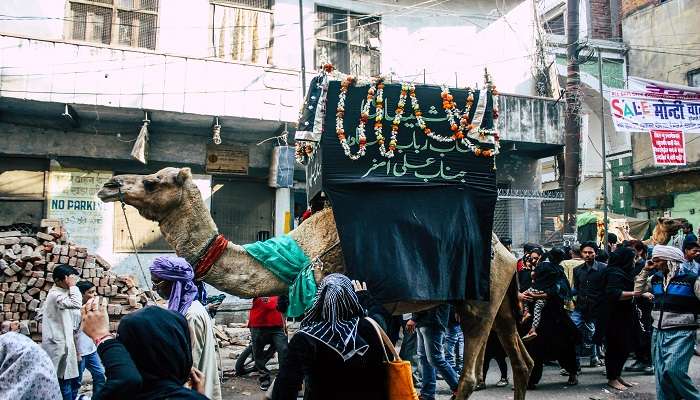
Experiencing cultural events at Bara Imambara provides a unique and immersive way to engage with the rich traditions and vibrant history of Lucknow. It is an important place of worship for the Muslims who come here every year to celebrate the religious festival of Muharram. If visiting during certain festivals like Muharram, witness traditional ceremonies and cultural events held at the Imambara. The ‘Shahi Zari Ka Juloos’ marks the onset of Muharram and the first day of the mourning month. The grand Zari (tazia) is taken out from the Asafi or Bara Imambara during the evening, where Shia Muslims gather in abundance from every corner of the region, even from other parts of India to join in the procession which ends at the Husainabad or the Chhota Imambara.
Further Read: Places To Visit In Lucknow
Now that you have a list of things to consider for your upcoming trip to Lucknow be sure to schedule your visit to these fantastic locations for an unforgettable experience. To avoid missing these chances, reserve your tickets right away!
For our editorial codes of conduct and copyright disclaimer, please click here.
Cover Image Source: Shutterstock
Frequently Asked Questions About Bara Imambara
What is the Bara Imambara entry fee?
The entry fee for visiting the Bara Imambara in Lucknow varies depending on whether you are an Indian or a foreign tourist. For Indian visitors, the fee is ₹50 for adults and ₹25 for children. For foreign tourists, the entry fee is ₹500.
Who built Bara Imambara and when?
Bara Imambara was built by Nawab Asaf-ud-Daula in 1784.
What are the main attractions in Bara Imambara?
The main attractions include the central hall, Bhool Bhulaiya (the labyrinth), and the Asfi Mosque. The complex also features a stepwell (Shahi Baoli).
Is there a particular architectural style that Bara Imambara adheres to?
The architecture of Bara Imambara is a blend of Mughal and Awadhi styles, with significant Persian influences.
Is it possible to take pictures inside Bara Imambara?
While there are usually no limits on photography within the complex, there may be additional fees and restrictions in place in some areas. Checking with the local authorities is the best option.
People Also Read:
Hill Stations Near Lucknow Places to Visit in Lucknow Best Restaurants in Lucknow

Passionate Marketing Student with a flair for storytelling, eagerly embarking on a journey within the vibrant world of travel. Excited to merge analytical acumen with creative skills to elevate the editorial landscape of the travel industry.











